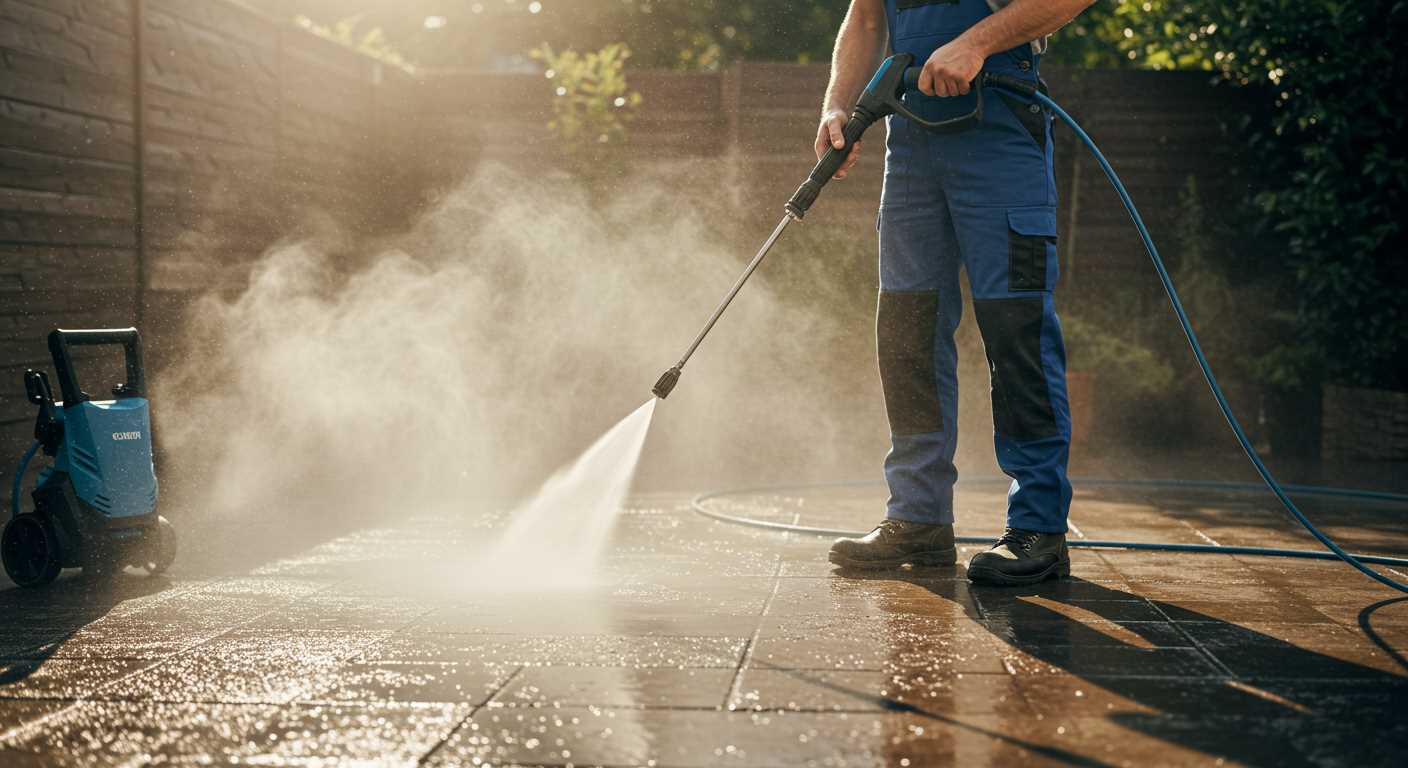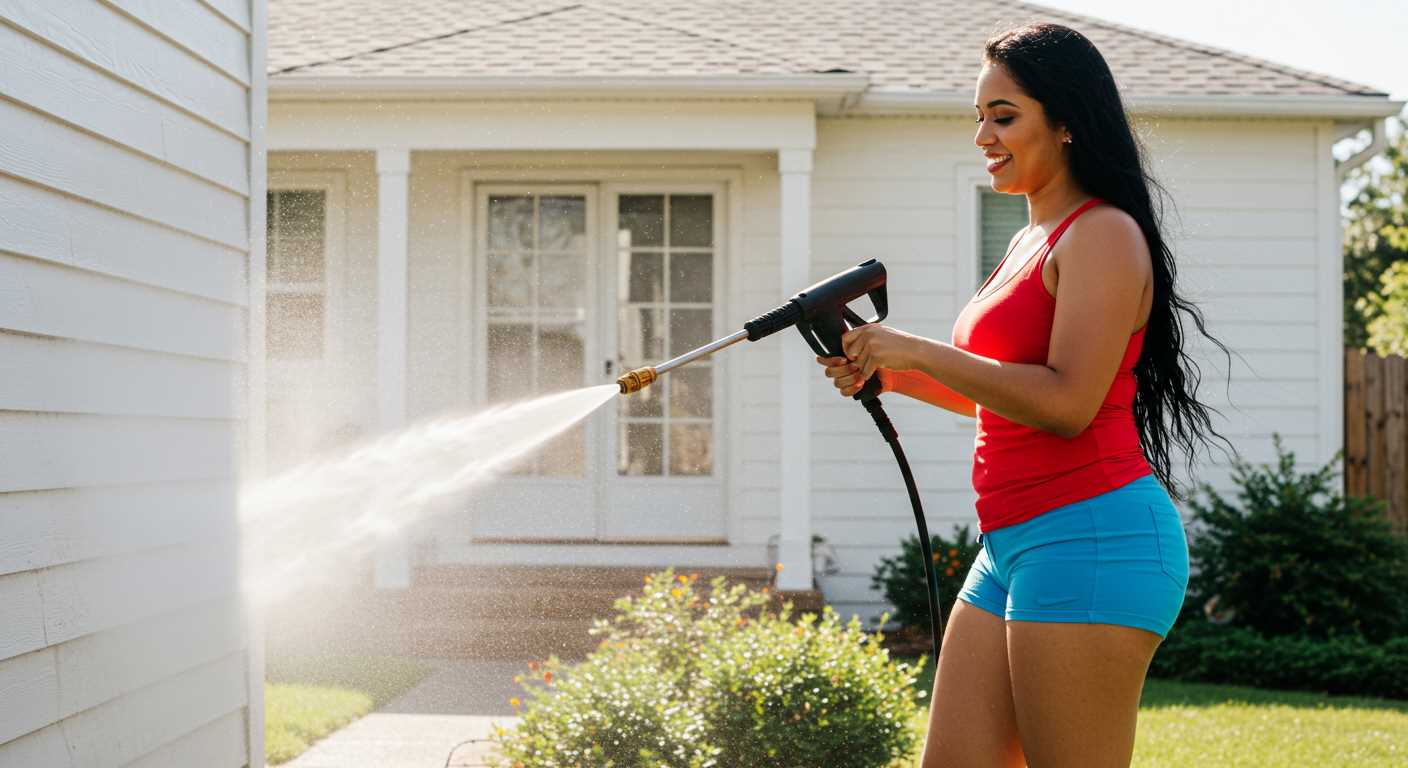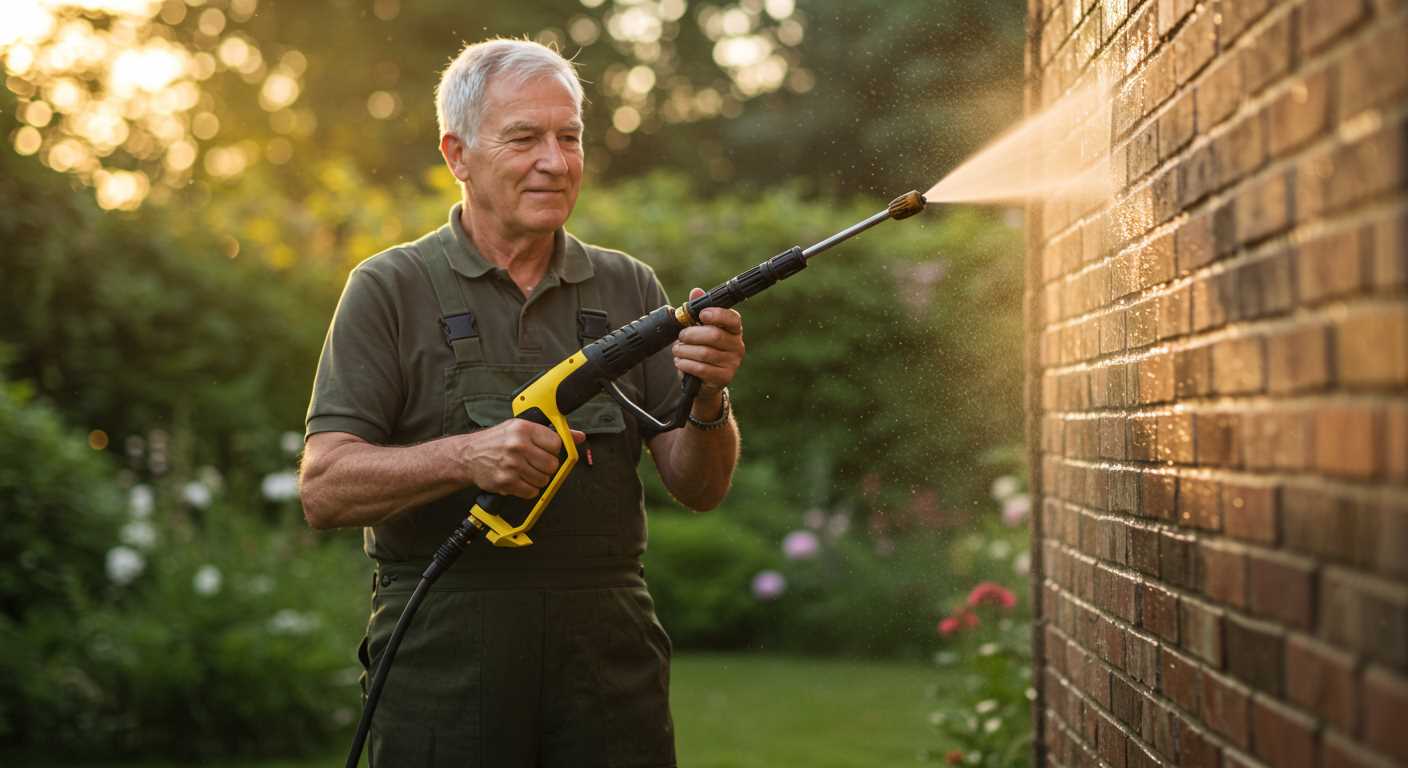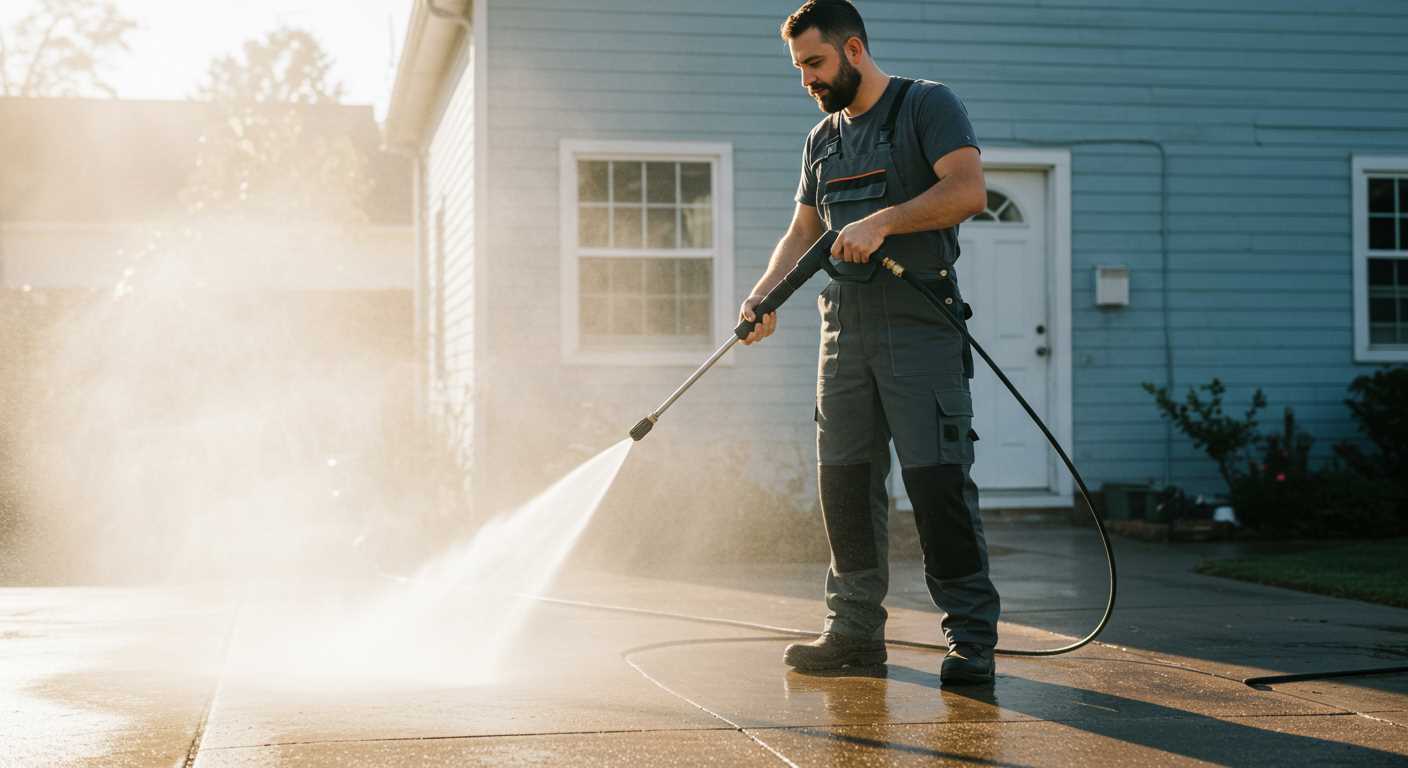In my experience, targeted water jets can indeed pose a risk to windows, especially if the conditions are optimal for causing harm. High-pressure streams, when directed at fragile surfaces or certain types of glass, can create a significant impact that may lead to cracks or even shattering.
Should you need to clean windows using a high-pressure system, it’s essential to adjust the settings to a lower intensity. This reduction minimizes the chances of damage while still allowing for effective cleaning. Always maintain a safe distance; keeping the nozzle at least several feet away from the glass will further reduce the risk of negative outcomes.
If you’re concerned about the integrity of your windows, using a fan spray attachment rather than a concentrated stream can diffuse the force, significantly lowering the potential for breakage. Additionally, inspect the glass for any existing imperfections before starting the cleaning process, as damaged surfaces are far more susceptible to further harm.
Impact of High-Pressure Cleaning on Fragile Surfaces
Applying high-velocity water jets might cause damage to vulnerable surfaces, particularly if the conditions are not properly managed. When using such equipment on transparent panes, careful consideration of the water’s force is paramount.
It’s crucial to understand that the risk of shattering arises from the combination of pressure intensity, nozzle distance, and the condition of the surface. Utilizing a fan spray pattern at a safe distance, typically around 2-3 feet, and employing a lower water setting can significantly reduce the potential for harm.
For older or already compromised surfaces, it’s advisable to opt for gentler cleaning methods to avoid exacerbating existing weaknesses. Regular maintenance and inspections can also enhance resilience against potential damage.
Always assess the type of surface and adjust settings accordingly; if unsure, consulting manufacturer guidelines is prudent. When in doubt, consider using manual tools designed for delicate cleanings, such as soft cloths or brushes, to ensure safety and preserve the integrity of the surface.
Understanding Pressure Washer PSI Levels
Always check the PSI rating of any cleaning device before using it on delicate surfaces. For standard glass or windows, a PSI level between 1,200 and 1,500 is suitable. This range provides adequate cleaning power without risking damage. Higher PSI ratings, such as those exceeding 2,000, can cause fractures or shatter more vulnerable surfaces.
Identifying Safe Pressure Levels

As an expert, I recommend employing adjustable nozzles or tips to control the force emitted. A narrow spray will amplify pressure, while a broader spray distributes force more evenly, decreasing the risk of harm. Always test in a small, inconspicuous area first to gauge the impact before committing to the entire surface.
Comparing Various Impact Levels
.jpg)
Materials vary dramatically in terms of resilience. Reinforced glass can handle higher pressures than standard window panes. The general rule is: the softer the surface, the lower the PSI should be. Be aware of environmental factors like temperature, as cold conditions can make surfaces more brittle, needing even greater caution during cleaning tasks.
Types of Glass and Their Durability
Knowing the various types of glass and their characteristics is crucial for determining how they respond to high-pressure cleaning methods. Here are some common types and their resistance to impact and force.
- Tempered Glass: This variety is treated through controlled thermal or chemical processes. Its strength is significantly higher than standard glass, capable of withstanding a sudden change in temperature and high impact. Generally used in shower doors and vehicle windows, it’s less susceptible to damage from intense blasts.
- Annealed Glass: The most common type, it lacks the additional treatment seen in tempered varieties. It can shatter under impact or stress, making it highly vulnerable to high-pressure tools. It’s often found in picture frames and older window installations.
- Laminated Glass: Made by sandwiching a layer of plastic between two sheets of glass, this type offers excellent shattering resistance. It serves well in applications where safety is paramount, such as in car windshields. A concentrated jet may not easily penetrate its layers.
- Low-E Glass: This variety features a microscopic coating that reflects heat. While effective for energy efficiency, it may have slightly lower tolerance towards physical impacts compared to tempered glass. Caution is advised when using intense cleaning methods on these surfaces.
- Bulletproof Glass: Constructed with multiple layers of laminated glass and polycarbonate materials, it’s designed for maximum security. This type exhibits exceptional durability against high impacts and is suitable for high-risk environments. Using any forceful cleaning technique remains safe.
Each glass type has its unique properties, impacting how it reacts to external forces. Understanding these differences aids in selecting appropriate cleaning techniques and tools to preserve integrity.
Distance and Angle: Key Factors in Impact
The distance from which the spray is directed and the angle of application significantly influence the likelihood of damage to vulnerable surfaces. Maintaining an appropriate distance is crucial; I recommend keeping at least 3-4 feet away from any fragile item.
Optimal Distance

Distance directly correlates to the intensity of the stream. Closer proximity elevates the force, raising the risk of shattering. Here are the recommended distances for various tasks:
- For general cleaning: 3-4 feet
- For stubborn stains: 4-6 feet
- For delicate surfaces: 6-8 feet
Angle of Impact
The angle at which the stream contacts the surface also plays a vital role. Directly perpendicular hits concentrate force, enhancing damage potential. Adjusting the angle to a more oblique position disperses force, providing a gentler cleaning mechanic. Here’s how to approach it:
- Perpendicular: High risk of impact damage
- 45-degree angle: Moderate risk, effective for most surfaces
- Oblique approach: Lower risk, ideal for fragile materials
Adjusting both distance and angle while cleaning protects sensitive surfaces from unintended consequences, and applying some strategic calculations will yield better outcomes while preserving integrity.
Comparing Nozzles: Which to Use with Glass
Utilising the appropriate nozzle is critical for interacting with fragile surfaces. I advise opting for a wider angle nozzle, such as a 25 or 40-degree variant, to reduce concentrated force. This distribution minimizes the likelihood of harm.
Fan Nozzles
Fan nozzles provide a broader spray pattern, which effectively dilutes the impact. The 25-degree nozzle, for instance, maintains a powerful cleaning capability while lessening the risk of shattering. For delicate panes, shift to the 40-degree option. This nozzle allows for gentle rinsing without overwhelming pressure.
Turbo Nozzles and Their Limitations
A turbo nozzle generates a rotating jet that offers strong cleaning capability but concentrates force in a smaller area. I advise against using this type on fragile surfaces due to the heightened risk of damage. Always err on the side of caution with more delicate tasks.
Real-World Scenarios of Pressure Washers and Glass
During my decade-long tenure in the cleaning equipment industry, I’ve encountered numerous situations where folks questioned the safety of using a high-pressure nozzle on transparent surfaces. In practical terms, the risk greatly depends on the combination of several factors. For instance, one must fully grasp the specific PSI output, particularly in residential units around 1,500 to 2,500 PSI, versus commercial models that can exceed 4,000 PSI.
In practice, I’ve witnessed many incidents where cleaning considerations were misguided. For example, a relatively low-pressure setting applied too closely to a window typically led to splintering–especially on older, weaker glass types. Conversely, maintaining a safe distance while utilising a wide-angle spray provided a far superior cleaning experience without compromising integrity.
Different scenarios demonstrated that treated glass or laminated surfaces with enhanced durability withstood higher PSI without incident. I’ve also seen instances where tinted or heat-treated units faced challenges due to uneven pressure distribution. The angle at which the stream strikes the surface can either disperse the force effectively or concentrate it on a limited area, which can often lead to cracking.
A practical recommendation I’ve offered clients is to always test-clean a small, inconspicuous area before fully committing to cleaning the entire surface. This trial can reveal how any given pane reacts before applying more aggressive approaches. In multiple cases, homeowners have opted for fan nozzles over turbo options to ensure a lower impact while still achieving satisfactory results.
Ultimately, understanding the composition and previous treatment of the glass dictates the method of approach during cleaning tasks. It’s wise to err on the side of caution, adapting strategies based on individual circumstances rather than applying a one-size-fits-all method for every transparent surface. Each scenario presents unique challenges and opportunities, making knowledge a valuable asset when taking on these cleaning projects.
Steps to Safely Clean Glass Surfaces

First, ensure the area is clear of obstacles and any objects that could be damaged. It’s crucial to assess the glass type. For tempered varieties, adjustments to cleaning techniques aren’t usually necessary, but with regular panes, caution is required.
Begin by choosing the right nozzle. A wide-angle fan nozzle (25-40 degrees) significantly diffuses the water stream, reducing impact. Avoid using the zero-degree nozzle, as it delivers a concentrated jet that may harm delicate surfaces.
Maintain a safe distance of at least 2-3 feet from the glass. This distance helps prevent potential cracks or shattering. Gradually move closer if necessary, observing how the surface reacts. Adjust the distance based on the perceived sturdiness of the glass and the equipment’s output.
Angle the nozzle slightly to avoid direct hits. An indirect approach allows for easier cleaning without exerting excessive force on the surface. Start from the top and work your way downwards to prevent streaking.
Employ low pressure initially. If the dirt doesn’t come off, gradually increase the intensity while keeping an eye on the glass. This method prevents unnecessary stress on the structure.
To finish, rinse thoroughly with clean water to remove any remaining soap or debris. Inspect for any damages; if any cracks or chips are visible, reevaluate the cleaning approach for the next time.
Using these methods will promote safe, effective cleaning of glass surfaces while mitigating risks.
Alternatives to Pressure Washing Glass

For those looking to clean transparent surfaces without the risk of damage, several methods stand out. Among the most effective are using a squeegee, microfiber cloth, and various cleaning solutions designed specifically for delicate surfaces.
A squeegee is ideal for larger areas that require a streak-free finish. This tool allows for controlled pressure and better distribution of cleaning liquids, reducing the chance of impact damage. A sturdy yet gentle microfiber cloth can skillfully remove dust and grime without scratching the surface. It’s also reusable and can be cleaned easily after use.
Consider the following cleaning solutions:
| Solution Type | Key Benefits |
|---|---|
| Vinegar and Water Mix | Natural and inexpensive; excellent for cutting through grime. |
| Commercial Glass Cleaners | Formulated to leave no streaks; often contain additional protective ingredients. |
| Soap and Water | Gentle on surfaces; effective for regular maintenance. |
For challenging spots, a touch of baking soda can be added for extra scrubbing power. Just ensure to apply it gently to avoid scratches. If you encounter persistent stains, a dedicated glass scraper is a suitable tool, allowing for precision without excessive force. Remember to use it at a low angle to avoid gouging.
Additionally, steam cleaning is worth exploring. This technique uses high-temperature steam to lift dirt without the risk of physical contact. Many models are designed specifically for windows and can be quite effective while ensuring safety for fragile surfaces.
These alternatives not only ensure a clean finish but also maintain the integrity of your transparent surfaces, making them practical choices for those cautious about potential damage.







